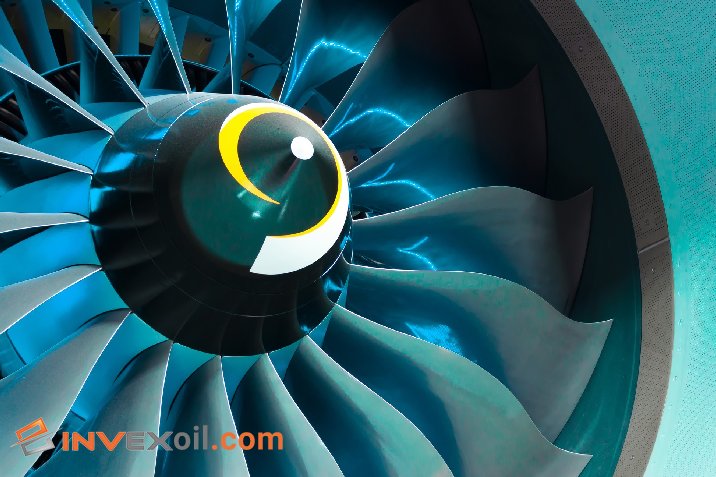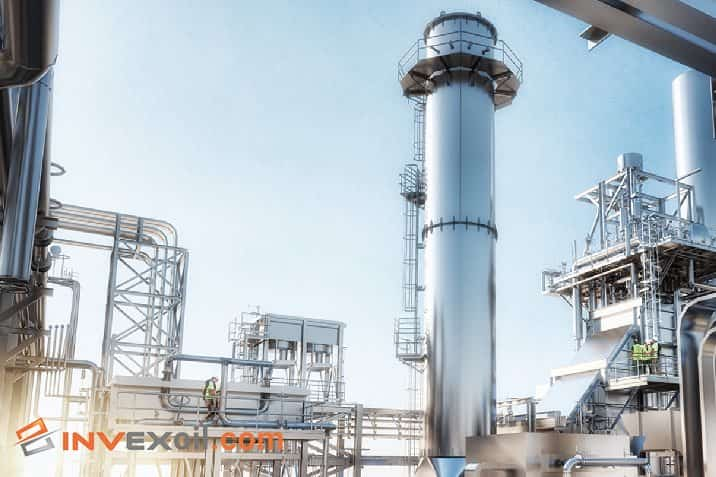As a wind turbine operates efficiently, its key components, such as gears and bearings, are subjected to extreme conditions and wear. To ensure smooth functioning and longevity, the right wind turbine lubricating oil is vital. However, over time, this oil can degrade, affecting performance. This is where turbine oil regeneration comes into play. By rejuvenating used lubricating oil through advanced processes, turbine oil regeneration restores its properties, enhancing its effectiveness and minimizing environmental impact. In this article, we will explore the importance of this lubricating oil and the benefits of turbine oil regeneration.
Table of Contents
Understanding the Importance of Wind Turbine Lubricating Oil
Effective wind turbine lubricating oil plays a pivotal role in ensuring optimal performance and durability of critical components. Proper lubrication minimizes friction, reducing wear and tear, and ultimately increasing energy output. Choosing the right lubricating oil is essential for maximizing efficiency and extending the lifespan of the turbine.
What Is this Lubricating Oil and How Does It Work?
Lubricating oil is a specialized lubricant designed to withstand the harsh operating conditions of wind turbines. It forms a protective film on gears and bearings, reducing friction and heat. This prevents excessive wear, corrosion, and potential breakdowns. Regular oil analysis and maintenance ensure the oil maintains its integrity and performance.
The Role of Lubricating Oil in Wind Energy Generation
This lubricating oil significantly impacts energy generation. Its proper application reduces energy losses due to friction, contributing to higher efficiency. By minimizing equipment downtime and maintenance costs, well-lubricated turbines can generate electricity more consistently and sustainably.
Key Factors for Choosing the Right Lubricating Oil
When selecting wind turbine lubricating oil, consider factors like viscosity, operating temperature, and load-bearing capacity. High-quality oils with excellent oxidative stability and anti-wear properties ensure superior performance and protection. Regular oil testing and analysis provide essential insights for timely oil replacement and optimal turbine operation.
Types of Lubricating Oil
Understanding the various types of wind turbine lubricating oil is crucial for optimizing turbine performance. These oils can be broadly classified into three categories: mineral-based, synthetic, and bio-based. Each type offers distinct advantages for wind turbine applications. Mineral-based oils provide cost-effectiveness and widespread availability. Synthetic oils offer superior thermal stability and extended service intervals. Bio-based oils are environmentally friendly, promoting sustainability in the renewable energy sector.
| Oil Type | Advantages | Disadvantages |
| Mineral-based | Cost-effective, widely available | Limited temperature range, less eco-friendly |
| Synthetic | High thermal stability, extended service intervals | Higher cost compared to mineral-based oils |
| Bio-based | Environmentally friendly, biodegradable | Performance may vary based on conditions |
Exploring Mineral-based Lubricating Oils
Mineral-based wind turbine lubricating oils are derived from refined crude oil. They exhibit good viscosity properties and provide adequate protection to turbine components. These oils are cost-effective and widely used in the industry. However, their limited temperature range and biodegradability should be considered, especially for offshore and environmentally sensitive applications.
Synthetic Lubricating Oils: Benefits and Applications
Synthetic this lubricating oils offer exceptional thermal stability and a broader temperature operating range. They resist degradation and oxidation, ensuring prolonged service life. Their superior lubricating properties reduce friction and wear, enhancing turbine efficiency. Synthetic oils are well-suited for extreme weather conditions and high-performance applications.
Bio-based Lubricating Oils: Environmental Considerations
Bio-based lubricating oils are derived from renewable sources, making them environmentally friendly alternatives. They exhibit excellent biodegradability and lower toxicity levels, minimizing ecological impact. However, their performance may vary depending on temperature and load conditions. Bio-based oils are gaining popularity as the industry moves towards greener solutions.
Proper Lubricating Oil Maintenance
Maintaining lubricating oil is crucial for reliable and efficient turbine operation. Over time, lubricant degradation can occur due to oxidation, contamination, and temperature fluctuations. Timely monitoring and analysis help identify degradation issues early on, ensuring optimal performance and component protection. Proper maintenance practices, including regular oil testing and adherence to manufacturer guidelines, can extend oil change intervals while mitigating potential risks.
Understanding Lubricant Degradation in Wind Turbines
Lubricant degradation in wind turbines is a natural process influenced by environmental factors, such as temperature and humidity. Oxidation and contamination by external particles can lead to reduced lubricant performance. Regular oil analysis is essential to assess viscosity, acidity, and additive depletion, offering insights into the lubricant’s health and potential issues.
Monitoring Lubricating Oil Health
Effective monitoring involves periodic oil sampling and testing to track lubricant condition and performance. Routine analysis helps detect wear particles, water content, and changes in oil properties. Monitoring the oil’s health allows for proactive maintenance, preventing equipment failures and costly downtime.
Extending Wind Turbine Oil Change Intervals: Strategies and Risks
Extending oil change intervals can be beneficial, reducing maintenance costs and downtime. However, careful evaluation of oil health and turbine operating conditions is necessary to assess the associated risks. Factors like turbine age, load variations, and environmental conditions influence the feasibility of extended intervals, making it crucial to strike a balance between cost savings and optimal performance.
How Wind Lubricating Oil Impacts Overall Efficiency
Optimal wind turbine lubricating oil is integral to enhancing overall efficiency. Proper lubrication reduces friction, ensuring smooth operation and minimizing energy losses. High-quality lubricants promote better gear and bearing protection, contributing to increased turbine output. Understanding the impact of lubricating oil on efficiency empowers operators to make informed decisions for improved performance.
| Performance Aspect | Impact on Efficiency |
| Friction Reduction | Minimizes Energy Losses |
| Gear and Bearing Protection | Enhances Turbine Output |
| Power Output | Optimizes Energy Generation |
| Lubricant Effectiveness | Identifies Improvement Areas |
Enhancing Wind Turbine Performance through Lubrication
Efficient lubrication enhances wind turbine performance by reducing internal losses and wear. The right oil maintains a protective film on critical components, reducing mechanical stress and heat generation. This results in smoother turbine operation, ultimately translating into improved energy generation.
Calculating the Impact of Lubricating Oil on Energy Output
The impact of lubricating oil on energy output can be quantified through performance data analysis. Monitoring factors like turbine power output, gear efficiency, and bearing performance provides insights into lubricant effectiveness. Accurate calculations help optimize energy production and identify potential areas for improvement.
Identifying Efficiency Challenges and Solutions
Identifying efficiency challenges involves evaluating lubricant performance, turbine design, and operational conditions. Analyzing lubrication systems and their impact on efficiency helps uncover potential solutions. Proper maintenance, oil analysis, and using advanced lubricants can address challenges and optimize wind turbine performance.
Turbine’s Lubricating Oil: Addressing Environmental Concerns
Wind turbine lubricating oil plays a crucial role in mitigating environmental impact. Proper management of potential leaks and spills is essential to prevent soil and water contamination. Eco-friendly disposal and recycling practices ensure responsible handling of used oil. The future lies in sustainable lubricants, with bio-based and environmentally conscious formulations leading the way.
| Aspect | Environmental Impact |
| Lubricant Leaks and Spills | Soil and Water Contamination |
| Eco-friendly Disposal and Recycling | Reduces Harmful Waste |
| Sustainable Lubricants in Wind Energy | Promotes Environmental Responsibility |
Managing Wind Turbine Lubricant Leaks and Spills
Proactive measures are essential to manage lubricant leaks and spills. Regular inspection and maintenance can identify potential issues early on. Implementing containment and cleanup protocols prevents environmental harm. Proper training and response plans equip operators to handle emergencies effectively.
Eco-friendly Disposal and Recycling of Lubricating Oil
Eco-friendly disposal and recycling of used lubricating oil are vital to reduce environmental impact. Recycling facilities can reprocess and purify the oil for reuse. Additionally, considering bio-based lubricants minimizes ecological consequences while enhancing turbine performance.
The Future of Sustainable Lubricants in Wind Energy
The future of wind turbine lubricants lies in sustainability. Advancements in bio-based and environmentally conscious formulations promote eco-friendly solutions. Reduced ecological impact, improved turbine efficiency, and regulatory compliance make sustainable lubricants a promising choice for the wind energy industry.
Comparing Lubricating Oil Brands and Formulations
In this comprehensive comparison, we delve into various wind turbine lubricating oil brands and formulations to aid in informed decision-making. Evaluating top manufacturers and their offerings provides valuable insights. Analyzing performance characteristics, such as viscosity, oxidation stability, and additive content, helps assess each formulation’s suitability for specific applications.
| Brand | Formulation Type | Viscosity (cSt) @ 40°C | Viscosity Index | Oxidation Stability (hrs) | Additive Content (%) |
| Argus | Bio-based | 46 | 150 | 1,200 | 10 |
| Ceres | Mineral-based | 46 | 150 | 1,200 | 8 |
| Shell | Fully synthetic | 46 | 150 | 2,000 | 15 |
Increasing Wind Turbine Efficiency: Innovative Lubricating Solutions
field have led to advanced additives and technologies that enhance lubrication performance, reducing friction and wear. These improvements contribute to optimized turbine operations and increased energy output.
| Additive Type | Benefits | Challenges |
| Anti-Wear Additives | Enhanced Component Protection | Potential Environmental Impact |
| Antioxidants | Prolonged Oil Life | Compatibility with Formulations |
| Friction Modifiers | Reduced Energy Losses | Precision Dispersion |
| Dispersants | Maintains Clean Surfaces | Proper Concentration and Mixing |
Exploring Additives for Improved Wind Turbine Lubrication
Additives play a vital role in enhancing wind turbine lubrication. Anti-wear additives protect critical components, while antioxidants extend oil life by combating oxidation. Friction modifiers reduce energy losses, and dispersants maintain clean surfaces. Understanding these additives empowers operators to select the most effective formulations.
Nanotechnology in Wind Turbine Lubricants: Promises and Challenges
Nanotechnology offers exciting possibilities for wind turbine lubrication. Nanoparticles can improve lubricant stability, reduce friction, and enhance wear resistance. However, challenges like particle dispersion and environmental impact warrant careful consideration.
The Role of Artificial Intelligence in Optimizing Lubrication Processes
Artificial Intelligence (AI) optimizes lubrication through predictive analytics and machine learning. AI analyzes data from sensors and operational conditions to recommend ideal lubrication schedules and formulations. This intelligent approach minimizes downtime and maximizes turbine efficiency.
Conclusion
In conclusion, understanding the significance of wind turbine lubricating oil is crucial for optimizing wind energy generation. We explored various aspects, including types of lubricants, environmental considerations, and the impact on overall efficiency. Additionally, we delved into innovative solutions, lifespan extension, and testing and analysis. By choosing the right lubricant and adhering to maintenance protocols, wind turbine components can achieve enhanced durability, reliability, and performance. To ensure smooth operation in extreme conditions and offshore environments, appropriate additives and climate-specific lubricants are essential. Regular oil testing empowers data-driven decision-making for prolonged turbine health. Implementing these insights will contribute to sustainable and efficient wind energy production.
FAQ
Now, There are some most common questions about turbine lubricating oil:
What are the key requirements for wind turbine lubricating oil?
Wind turbine lubricating oil must have high viscosity, oxidation stability, and excellent additive content to ensure optimal performance and longevity.
How does lubricating oil impact wind turbine efficiency?
Proper lubrication enhances wind turbine efficiency by reducing friction, wear, and heat generation, resulting in improved overall performance.
What challenges are faced in using lubricating oil for offshore wind farms?
Offshore wind farms face challenges like harsh environmental conditions and potential oil leaks, necessitating robust lubrication strategies and maintenance protocols.

Hello, This is Matteo Hudson Copywriter from InvexOil. We are here to provide super-important content to help you learn more easily and be involved in the world of Petroleum and Chemistry. We are here to answer your questions, help you to have better services, and also find the best solution for your problems. Don’t be shy and ask your questions in the comment box or call our number. If you want to connect with me directly, you can search for my name on Linkedin.







